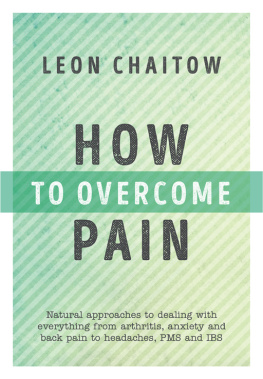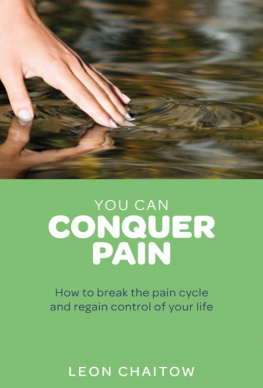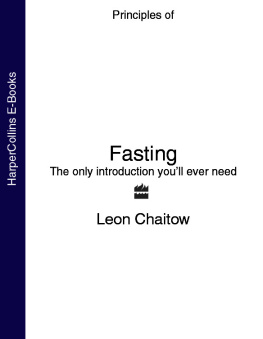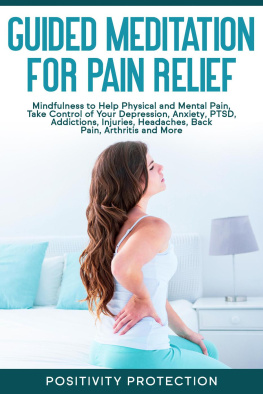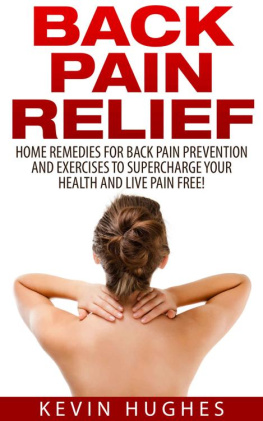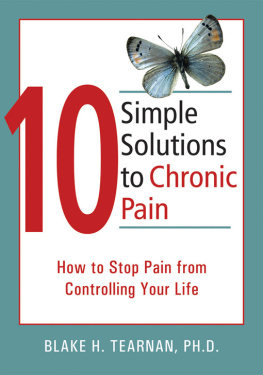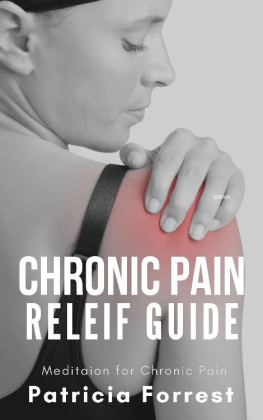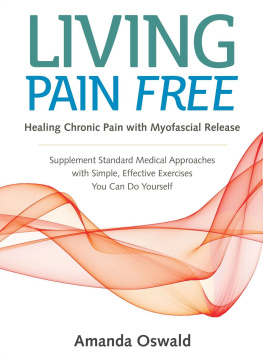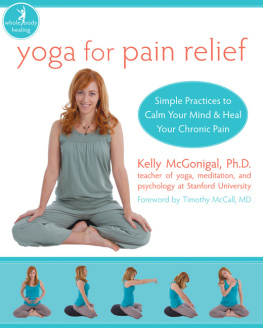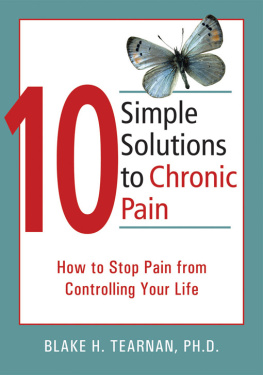Leon Chaitow is a registered osteopath and naturopath, editor of the Journal of Bodywork and Movement Therapies, and Honorary Fellow and former senior lecturer at the University of Westminster, London. Author of more than 60 books, including Holistic Pain Relief, he lectures internationally on both bodywork and general health topics from an integrated perspective.
LEON CHAITOW
HOW
TO OVERCOME
PAIN
Natural approaches to dealing with everything from arthritis, anxiety and back pain to headaches, PMS and IBS

This edition first published in the UK and USA in 2017 by
Watkins, an imprint of Watkins Media Limited
19 Cecil Court
London WC2N 4EZ
Design and typography copyright Watkins Media Limited 2017
Text copyright Leon Chaitow 2017
Leon Chaitow has asserted his right under the Copyright, Designs and Patents Act 1988 to be identified as the author of this work.
All rights reserved.
No part of this book may be reproduced or utilized in any form or by any means, electronic or mechanical, without prior permission in writing from the Publishers.
1 3 5 7 9 10 8 6 4 2
Designed and typeset by Clare Thorpe
Printed and bound in Finland
A CIP record for this book is available from the British Library
ISBN: 978-1-78678-017-1
www.watkinspublishing.com
This book is dedicated to my wife Alkmini with love and thanks
CONTENTS
INTRODUCTION
Pain is an inevitable and universal experience it affects us all at some time. Of course, the pain we most often experience is acute but transient and short-lived a self-limiting event. A cut, a bruise, a sting, even a break all are dealt with by our bodys self-repair mechanisms.
Chronic pain takes pain into another dimension altogether and can be experienced as a crushing life sentence. We need to be reminded that the bodys self-regulation (technically known as homeostasis) also operates constantly in chronic settings, just as it does in acute ones. Indeed, some of the bodys repair mechanisms such as inflammation are themselves a source of pain, even though they are helping to heal. This highlights a point that this book tries to emphasize: the more you understand about the causes and mechanisms that produce pain, the more you will be able to modify or eliminate it.
Chronic pain can be seen as a burden or a challenge. How you manage your pain is, to a very large extent, up to you. Another of the primary objectives of this book is to show you ways to approach your pain positively, enabling you to lead as normal a life as possible. A key message to that end is Hurt does not necessarily mean harm. In other words, even though it hurts, try to carry on as normal (walking, working, gardening and so on), unless you have been specifically advised to avoid particular activities. Using our pain as an excuse to retreat from performing everyday tasks leads to a spiral of inactivity, increased disability and loss of self-confidence.
An important first step in reversing such a tendency is to learn as much as possible about your pain. If you understand why you are feeling pain, and are aware of the possibility of recovery, you will manage the situation far more positively than if you do not understand the processes and suffer from feelings of anxiety and helplessness that amplify the pain.
Having worked as an osteopathic practitioner in private, as well as state-funded, practices in the United Kingdom, and also in southeast Europe, I have been fascinated to observe the differences in patients coping skills, both within and between these settings. Much of my work has been with people who are in considerable and often permanent pain, suffering from conditions such as arthritis and fibromyalgia. One clear impression I have gained, supported by medical research, is that learning about his or her own condition often helps the person in pain as much as any treatment. Knowledge is power, and understanding your pain gives you power over it.
One of my motivations in writing this book was to bring to a wider audience as much information as possible about pain, based on current research (as well as effective traditional methods), and to show what we can do to help ourselves to recover from pain, or to cope with it. The sheer range of causes, types and intensities of pain, and of ways in which it can be modified, blocked, eased or eliminated, is beyond the scope of any one book. What can be done here is to convey the essence of the pain story, giving you the knowledge that will empower you to deal with your inevitable periods of pain most appropriately. Instead of no pain, no gain, this book aims to give you more information, less pain.
LEON CHAITOW D.O.
www.leonchaitow.com
UNDERSTANDING YOUR PAIN
Of all symptoms, pain is the one that is most likely to drive you to consult your doctor. Acute pain is a warning that alerts the defence and self-regulating mechanisms of the body that the brain senses danger. Without acute pain you would not remove your hand from a flame. When a fire alarm rings, finding the source of the fire is far more urgent than switching off the alarm. But when pain is chronic, as it often is, the causes are seldom obvious.
Understanding how chronic pain evolves, and how it may be modified, are the major aims of this book. We now know that pain is in the brain, and should remember that what we feel depends on how the brain interprets and gives meaning to the multiple messages it receives. We can learn from most chronic pain; and we may be able to ignore it safely, manage or successfully treat it in a variety of ways. This book will explore all these options.
WHAT IS PAIN?
Initially, pain serves as a message of distress, danger or damage a call to protect the area that hurts that is interpreted in the brain as pain.
Something will have happened to stimulate or irritate tiny nerve structures called nociceptors (pain receptors) possibly inflammation, chemical irritation, heat, or a mechanical event, such as pressure, stretching, cutting or tearing. The resulting pain messages travel to the brain via mylenated (sheathed) nerves, which carry impulses rapidly at 65ft (20m) a second, and unmyelenated nerves, which carry impulses at 6ft (2m) a second.
Nociceptors are found in most tissues of the body, in greater numbers where we are most sensitive. Each nociceptor has a threshold ).
HOW WE FEEL PAIN
Pain messages travel from the site of injury to the brain, where pain is experienced through a virtual body map.

Although the alarm messages that we perceive as pain usually start in the part that hurts, this is not where we actually feel pain. Instead, pain is felt in the brain, by means of a virtual body map (the homunculus) that resides there. If this seems strange, consider that many amputees feel phantompain in the missing limb, long after it has been removed. Consider also that some pain does not even originate from where we feel the hurt. Pain messages arising from local areas, and travelling along nerves to the spine and from there to the brain, can be re-routed, so that the pain is felt somewhere else altogether. This is known as reflex, or referred, pain (see pages ). For example, angina pain is felt in the left arm (and other areas) but derives from distress in heart muscles.
Pain can be acute or chronic. Acute pain derives from a condition that builds rapidly to a crisis, such as a sprained ankle, whereas chronic pain is longer-lasting and more deep-seated for example, back pain resulting from poor posture over a long period.
Next page
